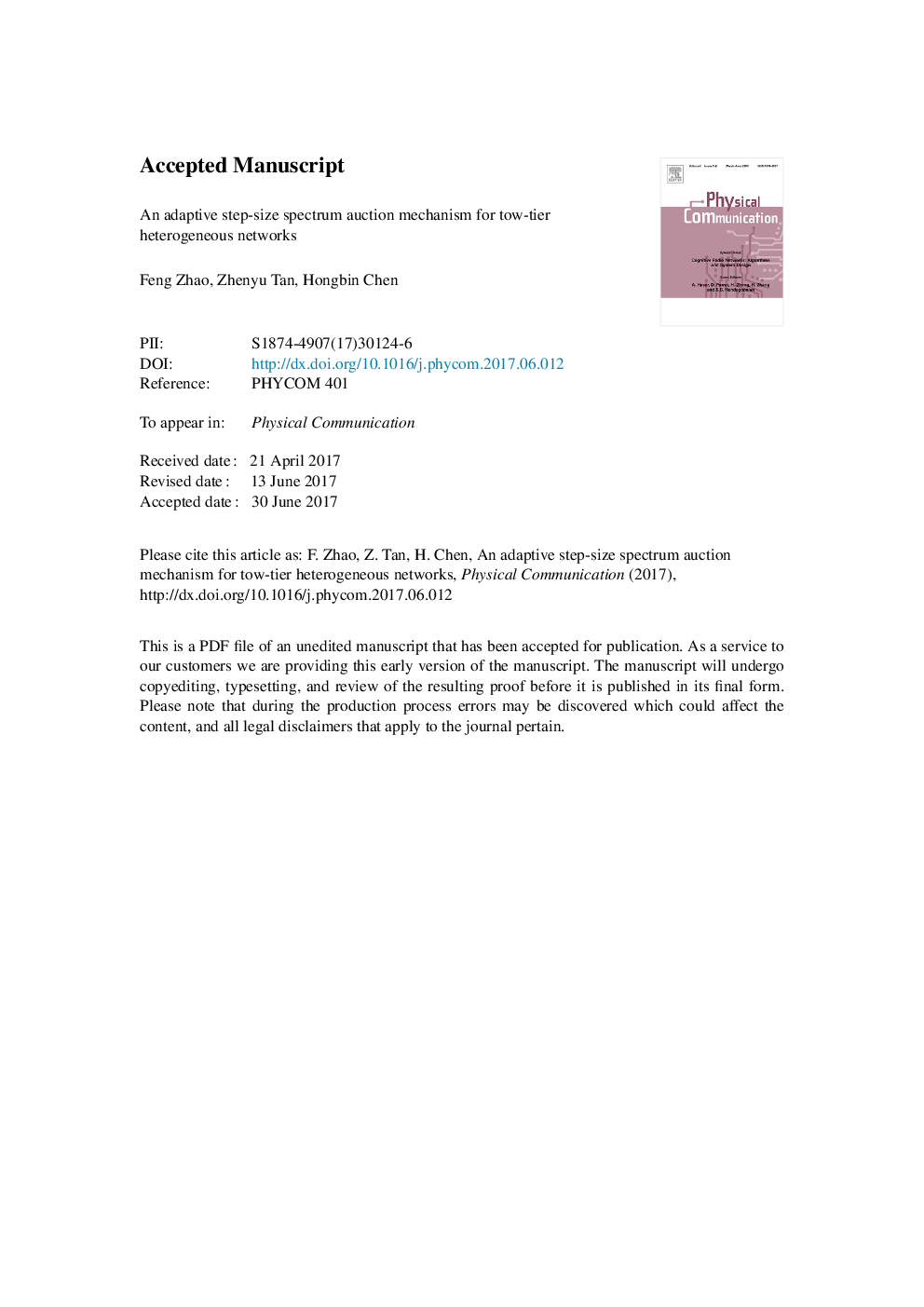| Article ID | Journal | Published Year | Pages | File Type |
|---|---|---|---|---|
| 6889273 | Physical Communication | 2017 | 22 Pages |
Abstract
Recently, with the rapid growth of demands for wireless communications, dynamic spectrum allocation is one of the key technologies in cognitive radio networks to resolve the realistic problem of low utilization efficiency of spectrum. It mainly focuses on how the spectrum owner dynamically allocates idle spectrum to secondary users who have no licensed spectrum for communications. In this paper, a dynamic spectrum allocation model based on auction theory in a two-tier heterogeneous network is proposed, in which the primary users (PUs) are the sellers, the central processor (CP) auctioneer is the coordinator, and femtocell base station (FBS) as the buyer bids for the idle spectrum and act as a wireless access point that provides communication services for secondary users (SUs). Its basic process is as follows: the auctioneer gradually raises the spectrum price from the reserved price; each bidder decides whether participates in the purchase or not. It is characterized by distributed execution and low complexity which can reduce unnecessary information exchange between primary users or secondary users. Meanwhile it can enhance the utilization of spectrum and improve the efficiency of the auction by generate the incentive mechanism.
Related Topics
Physical Sciences and Engineering
Computer Science
Computer Networks and Communications
Authors
Feng Zhao, Zhenyu Tan, Hongbin Chen,
